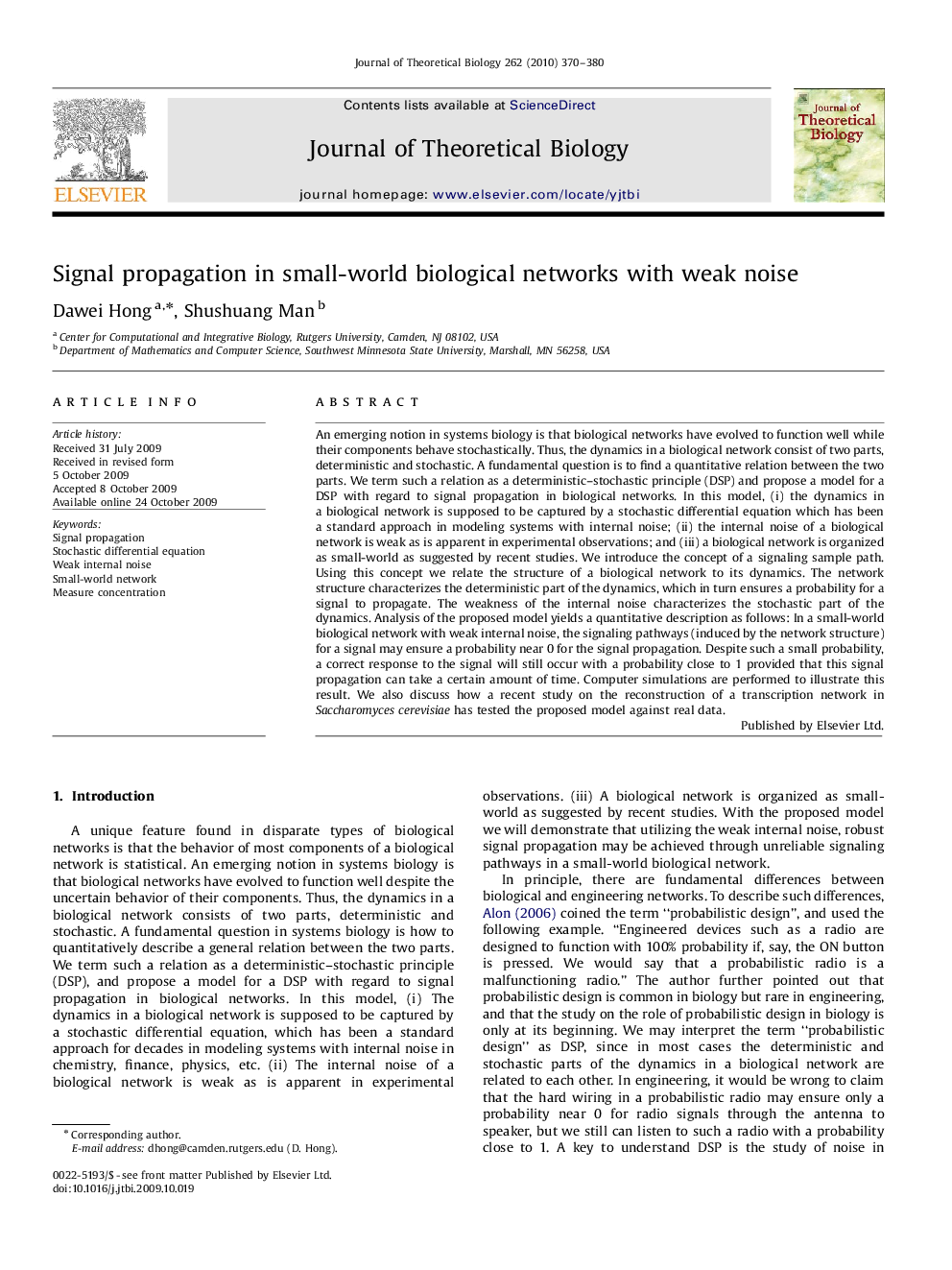| Article ID | Journal | Published Year | Pages | File Type |
|---|---|---|---|---|
| 4497871 | Journal of Theoretical Biology | 2010 | 11 Pages |
An emerging notion in systems biology is that biological networks have evolved to function well while their components behave stochastically. Thus, the dynamics in a biological network consist of two parts, deterministic and stochastic. A fundamental question is to find a quantitative relation between the two parts. We term such a relation as a deterministic–stochastic principle (DSP) and propose a model for a DSP with regard to signal propagation in biological networks. In this model, (i) the dynamics in a biological network is supposed to be captured by a stochastic differential equation which has been a standard approach in modeling systems with internal noise; (ii) the internal noise of a biological network is weak as is apparent in experimental observations; and (iii) a biological network is organized as small-world as suggested by recent studies. We introduce the concept of a signaling sample path. Using this concept we relate the structure of a biological network to its dynamics. The network structure characterizes the deterministic part of the dynamics, which in turn ensures a probability for a signal to propagate. The weakness of the internal noise characterizes the stochastic part of the dynamics. Analysis of the proposed model yields a quantitative description as follows: In a small-world biological network with weak internal noise, the signaling pathways (induced by the network structure) for a signal may ensure a probability near 0 for the signal propagation. Despite such a small probability, a correct response to the signal will still occur with a probability close to 1 provided that this signal propagation can take a certain amount of time. Computer simulations are performed to illustrate this result. We also discuss how a recent study on the reconstruction of a transcription network in Saccharomyces cerevisiae has tested the proposed model against real data.
